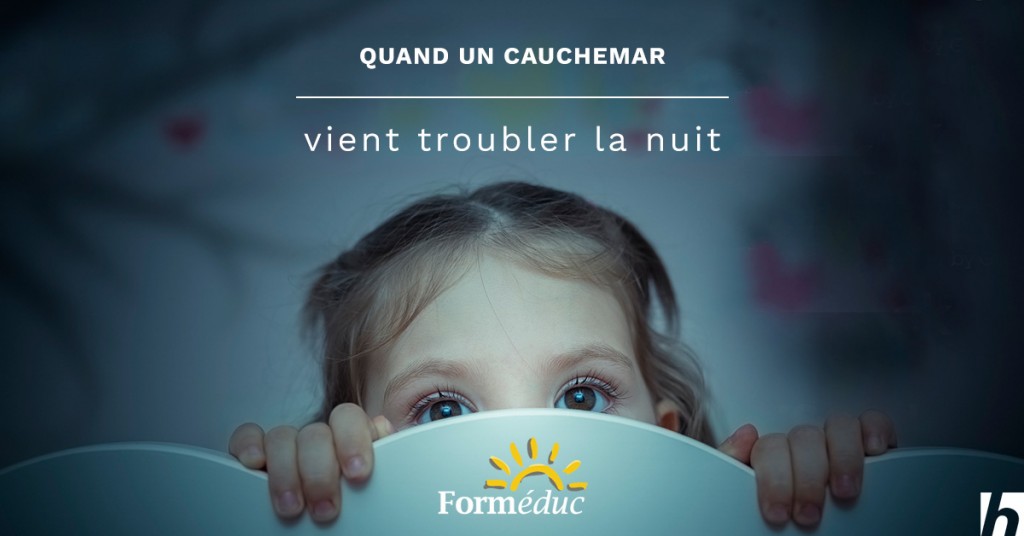

- 25 October 2020
- |
- Andrée Bouchard
Many children have had or regularly have nightmares. Whether it’s monsters in the wardrobe, the big bad wolf or the death of a loved one, bad dreams are linked to fears (e.g. separation anxiety) or situations experienced by the child (e.g. conflict with parents).
Nightmares are frightening dreams that wake children up, leaving them anxious and afraid, and occur occasionally in 30% of 5-year-olds. They increase in frequency with age, and are more common in girls. Nightmares occur in the second half of the night. It is accompanied by awakening, when the child quickly regains normal consciousness and can recount his or her “bad dream”. Nightmares are favored by stress or physical factors (such as fever). They accompany the child’s normal psychological development and life experiences (separation anxiety, sibling rivalry, conflict with a parent, etc.).
Sleep is divided into several major phases. Light sleep alternates with slow-wave and deep sleep, followed by REM sleep. It’s mainly during this last phase that nightmares occur.
What to do?
When your child wakes up with a nightmare, reassure him, console him and listen to him if he wants to describe what he’s just experienced. Once he’s reassured, he should have no trouble going back to sleep.
Here are some ways to reduce the incidence of nightmares:
- During the day, talk to your child about his or her nightmares.
- Remind him that monsters don’t exist, and suggest books or films about them to help him overcome his fears.
- Drawing is an excellent way for children to exorcise their fears, and for parents to explain that none of this exists in reality.
- Help your child to express the frustrations and conflicts that preoccupy him or her. If you sense that your child is worried, for example, about the arrival of a little brother in the family, talk to him about this situation, the changes it implies, and so on.
Nightmares, frequent in early childhood, fade around age 5, return briefly around the tenth year, and then disappear altogether.
When should we consult a healthcare professional?
- When the nightmare recurs several times a week.
- When the child shows no signs of calming down.
- When the nightmare is post-traumatic (e.g. child victim of a serious accident).
Don’t confuse nightmares with night terrors
Night terrors often begin between the ages of 3 and 6, and occur during the first 2 hours of the night. The primary cause of night terrors is a lack of sleep (naps and night sleep). Night terrors can occur when children are excessively tired, when they experience changes that make them anxious, and when their sleeping habits change. In addition, when a child is ill or has a fever, night terrors may occur more frequently.
During an episode of nocturnal terror, the child cries out, sits up in bed, screams, and has open, staring eyes. He may speak incoherently and gesticulate. When we try to touch or calm the child, he becomes even more agitated and may struggle.
The episode is usually a one-off, lasting from 1 to 20 minutes, and the child goes back to sleep spontaneously. The following day, the child has no memory of the nocturnal episode. Night terrors pose no danger to the child, and disappear as the child matures.
What to do?
Talk to the child slowly and calmly, making light physical contact (a hand on the shoulder), taking care not to wake him or her! Night terrors are waking nightmares akin to sleepwalking. Sudden awakening can cause mental confusion.
To learn more about the problems that can arise during sleep, we offer a training course for parents and daycare educators: Mieux dormir pour bien grandir (Better Sleep for Better Growth) .




